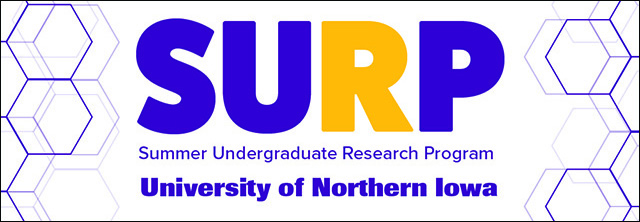
2022 Summer Undergraduate Research Program (SURP) Symposium
Location
ScholarSpace, Rod Library, University of Northern Iowa
Presentation Type
Open Access Poster Presentation
Document Type
poster
Keywords
Earthworms--Food; Granivores; Prairie plants--Seeds--Predators of; Prairie restoration;
Abstract
Much of Iowa and the midwest used to be covered in tallgrass prairie– now only a small percentage of it remains. Many prairie restoration efforts to revitalize prairie lands are in place, but native prairie seed prices are extremely high. In addition, seedling establishment rates of native prairie seed are low. There are many events that can occur to prevent a seed from germinating into a seedling. One of those events is seed predation (or granivory). Seed predation is when seeds are used as a primary food source for animals. Granivores that commonly come to most minds include mice, squirrels, insects, and birds. Most do not know that earthworms are granivores as well. This research focused on that single seed predator, Lumbricus terrestris (also known as the common earthworm), in order to get a better understanding of where the ungerminated prairie seeds are going. How do earthworms compare against all other seed predators when tested in a Northeast Iowa prairie restoration site? Methods for evaluating the impact of L. terrestris on seed predation in a way that complements the goal (of applying what is learned to prairie restoration efforts) have not been highly developed. The literature reviewed gave an excellent starting point, but a large part of this study aimed at developing methodology that would allow the big question to be researched effectively.
Start Date
29-7-2022 11:00 AM
End Date
29-7-2022 1:30 PM
Event Host
Summer Undergraduate Research Program, University of Northern Iowa
Faculty Advisor
Laura Jackson
Department
Department of Biology
Copyright
©2022 Jacey Meier and Dr. Laura Jackson
File Format
application/pdf
Recommended Citation
Meier, Jacey and Jackson, Laura L. Ph.D., "Developing Methods to Assess the Role of Lumbricus Terrestris on Seed Predation In Prairie Restoration [Poster]" (2022). Summer Undergraduate Research Program (SURP) Symposium. 4.
https://scholarworks.uni.edu/surp/2022/all/4
Developing Methods to Assess the Role of Lumbricus Terrestris on Seed Predation In Prairie Restoration [Poster]
ScholarSpace, Rod Library, University of Northern Iowa
Much of Iowa and the midwest used to be covered in tallgrass prairie– now only a small percentage of it remains. Many prairie restoration efforts to revitalize prairie lands are in place, but native prairie seed prices are extremely high. In addition, seedling establishment rates of native prairie seed are low. There are many events that can occur to prevent a seed from germinating into a seedling. One of those events is seed predation (or granivory). Seed predation is when seeds are used as a primary food source for animals. Granivores that commonly come to most minds include mice, squirrels, insects, and birds. Most do not know that earthworms are granivores as well. This research focused on that single seed predator, Lumbricus terrestris (also known as the common earthworm), in order to get a better understanding of where the ungerminated prairie seeds are going. How do earthworms compare against all other seed predators when tested in a Northeast Iowa prairie restoration site? Methods for evaluating the impact of L. terrestris on seed predation in a way that complements the goal (of applying what is learned to prairie restoration efforts) have not been highly developed. The literature reviewed gave an excellent starting point, but a large part of this study aimed at developing methodology that would allow the big question to be researched effectively.



